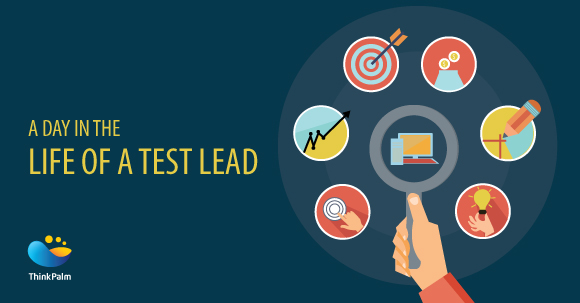In different companies, the role of Test Lead may handle similar kinds of activities but their engagement levels may vary based on the projects, clients, organizational processes and more. This article focuses on the lessons learned (or in the learning process) in leading a team of testers in software projects and product environments at ThinkPalm.
1. The Challenges and the Routine Job
The important task of the lead is to understand the requirements, get the maximum test coverage of the Software Under Test (SUT), discuss with Business Analysts, Client side representatives, Development Team leads, Test Managers, Project managers, QA managers, the production support team, the testing team members and other stakeholders till the end user level to consolidate the big picture.
To test the SUT, in user’s shoes, one needs to have that big picture in mind of how the application will be used, the target audience, the usability perspectives of each role/rank.
For many cases, software implementation is an uphill task and people try to reject the automation, as majority of the key users might be reluctant to change from what they usually do.

2. Non Reproducible Issues and Finding Effective Solutions
There have been scenarios in the company, where we had our application up and running in more than 100 locations and at only one location, few users faced some peculiar issues. To find out the issue in such cases, at times, is a tedious task and the testing team has to evaluate different options and strategies for recreating the same in the Test Environment.
Only when we can recreate or replicate such issues in the test environment, the fix of that particular error can be tested properly.
Whenever an issue is reported, the impact analysis includes the impacted areas, the affected number of installations, the users affected and related factors.
3. Act of Continued Improvement or Kaizen
For every release (or build release), there will be a set of learnings involved, and the best practices are recorded. Retrospective meetings, as part of the scrum implementation, is one of the best ways for the same. This helps the team to analyse, what went good, what went bad and find out ways of how to do things in a better way.
4. Relying on the Principle – “Honesty is the Best Policy”
There had been a scenario in a project, during regular audits of the software, there was a Non-Conformance (NC) reported for not having a critical feature. It was a pressing need to close the NC as early as possible. The feature being developed had few minor issues, which delayed the formal acceptance procedure from the client side.
One of the key stakeholders from the client side enquired, “Why not we fabricate a screenshot indicating that the feature has been implemented and try to close the NC?”But the testing team felt that this is not the right way and asked in return, “Why can’t we implement the feature we have developed, thus closing the NC the right way?” And the final decision was to take the developed feature for implementation!
In agile environments, where the requirements are seldom frozen and the change requests are frequent, it is a challenging task to deliver as per the customer expectations. But, following industrial best practices, getting the best resources in the team and the continued support and encouragement from the management, make the testing tasks wonderful and achievable within the schedule as planned.